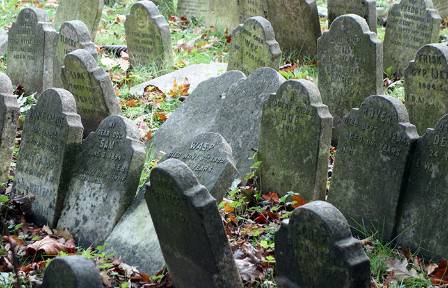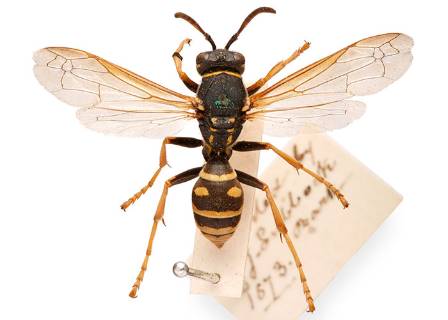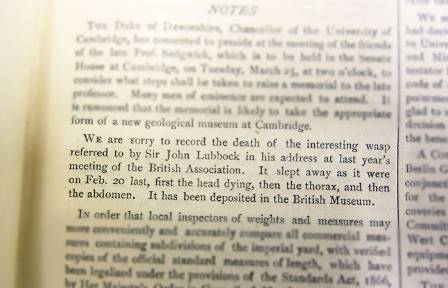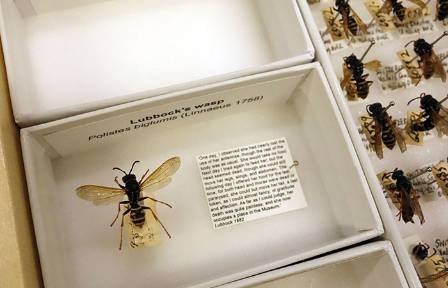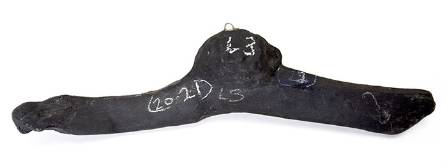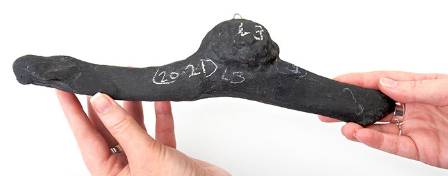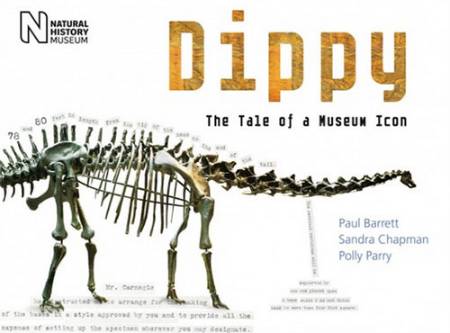The topic of my blog today came about via two quite random and seemingly un-related incidents. The first was a lunchtime walk to Hyde Park and a sneak through an open gate to catch a view of the Victorian-era pet cemetery near Bayswater Road. Among the small headstones for the likes of 'Rover' and 'Tiny' was one inscribed with 'Wasp'.
A tombstone for 'Wasp' (centre) in Hyde Park's Victorian pet cemetery. Most likely not the burial place of an actual wasp, although the Museum's wasp expert joked: 'A wasp makes an ideal pet in a cramped London apartment'.
The second incident took place at an after-work networking event when one of my colleagues relayed that she'd just been talking to someone about a particular wasp held in the Museum's entomology collection. And hence the logical conclusion of these two experiences was a post about John Lubbock's pet wasp.
'A little gentle[wo]man in a brown overcoat, with black and yellow nether garments.' Lubbock's pet wasp.
Sir John Lubbock (1834-1913), the first Lord Avebury, was a banker, politician, naturalist and Museum Trustee. In his political life, he was responsible for introducing bills giving us more bank holidays and preventing the destruction of ancient monuments, including the stone circle in Avebury (which inspired his title when awarded a peerage in 1900). In his guise as a naturalist, he was responsible for the identification of several new crustacean species, and years of study of the habits of ants, bees and wasps.
It was in May 1872 that he acquired his pet wasp. On a visit to the Spanish Pyrenees he found the female insect in a tiny nest with around 20 un-hatched larvae. Lamenting its state of being 'alone in the world', Lubbock brought the wasp back to England with him on the train, housed in a small bottle. In his 1884 book Ants, Bees and Wasps, Lubbock wrote:
I had no difficulty in inducing her to feed on my hand; but at first she was shy and nervous. She kept her sting in constant readiness; and once or twice in the train, when the railway officials came for tickets, and I was compelled to hurry her back into her bottle, she stung me slightly - I think, however, entirely from fright.
Gradually she became quite used to me, and when I took her on my hand, apparently expected to be fed. She even allowed me to stroke her without any appearance of fear, and for some months I never saw her sting.
So fond of the wasp was Lubbock that in the August of 1872 he took it with him to a meeting of the British Association for the Advancement of Science, on which The Telegraph reported, describing the pet insect (partially incorrectly) as:
A little gentleman in a brown overcoat, with black and yellow nether garments.
Come the new year, Lubbock's little lady, originally described as Polistes bimaculata but later revised to Polistes biglumis, took a turn for the worse. He wrote:
When the cold weather came on she fell into a drowsy state, and I began to hope she would hibernate and survive the winter. I kept her in a dark place, but watched her carefully, and fed her if ever she seemed at all restless.
She came out occasionally, and seemed as well as usual till near the end of February, when one day I observed she had nearly lost the use of her antennae, though the rest of the body was as usual. She would take no food. (Two days later) she could but move her tail, a last token, as I could almost fancy, of gratitude and affection.
She died in February, 1873. Lubbock noted:
As far as I could judge, her death was quite painless.
It's rumoured that her passing was commemorated with an obituary in The Times. This has not been substantiated, but her demise was recorded with a paragraph in the journal Nature.
The expiration of Lubbock's wasp noted in the journal Nature, Volume 7, Number 177, on 20 March, 1873.
Promptly following her death, Lubbock donated his pet wasp to the Museum (at that time, a part of the British Museum). Her registration number shows that she was the Museum's eighth acquisition of 1873. Her final resting place today is on a pin in a Polistes collection tray, now under the care of Gavin Broad, the Museum's Senior Curator of Hymenoptera.
Gavin says:
It's a very common species for the parts of Europe where it's from, but this particular one has gained quite a bit of notoriety.
So much so, he says, that it is part of an informal pilgrimage made by Lubbock fans, which also includes sites such as Stonehenge and Avebury.
There's a band of Lubbock enthusiasts out there and about every two years I have a pilgrim to visit the wasp.
This includes the gentleman my colleague (and, later, I) met at that networking event. When I mentioned to Gavin the prospect of Lubbock's pet wasp featuring in this blog, he said:
I look forward to her having her day online.
Today, Gavin (and Sir John, and all you Lubbock fans out there), is that day.



